Palla 21, also known as Palla Eh!, is an ancient game played in a few (currently six) small villages in Southern Tuscany, Italy. Documented traces of games practically identical to Palla 21 in Italy are dated to the 16th century, while it is suspected that the origin of these games goes further back in time.
The game is in fact part of a wider family of handball games. More renown variants include Valencian pelota from Spain, the Dutch Kaats, the Belgian Balle Pelote, or Pallone Elastico in Piedmont, Northern Italy, not to mention other pelota games in Latin America.
The rules of Palla 21/Palla Eh! are quite complex, and the best way to get into the game is actually to attend a match with mentoring by one of the senior players. This has also the advantage of appreciating the full context for the game, where the spectators are also an element in the game (figure 1).

Some key information
- the game is played by two teams of five
- the ball, which is hand made, has a diameter of approximately 4 cm and a weight between 35 and 40 grams (figure 2)

- there is no standard field. Each village has a space where the game is played -normally the main square- with different characteristics. The resulting field, in any case, has a rectangular shape (around 30×150 feet, at least – see photo 3 for Torniella). Any natural or artificial element of the square is part of the game: i.e the ball can bounce on walls, roofs, drive through tree canopy, and still be valid.

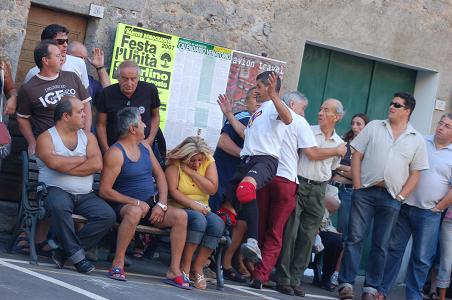
- the ball is hit alternately by the two teams, and can be hit back as long as it bounces once (at the most), like tennis
- Also the scoring system is just like tennis (15,30,40,advantage, game, set). Each set counts a score of 7, and three sets make 21, which leads to win an inning. The match is won with two innings out of three.
- the game starts by serving. Service always takes places from the same side, so the teams switch sides as needed. The service, called “mando”, is a very scenic part of the game and not all players have the technical skills and ability to serve

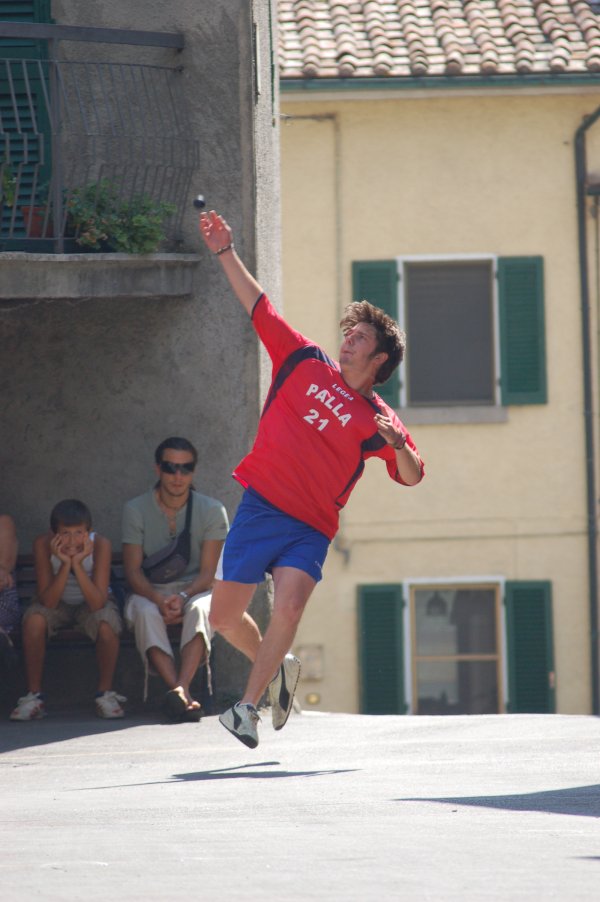




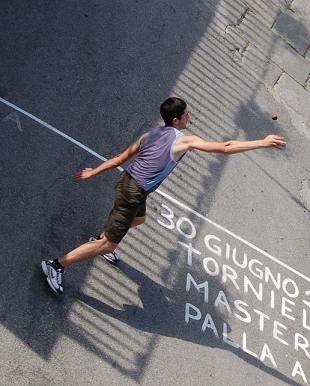



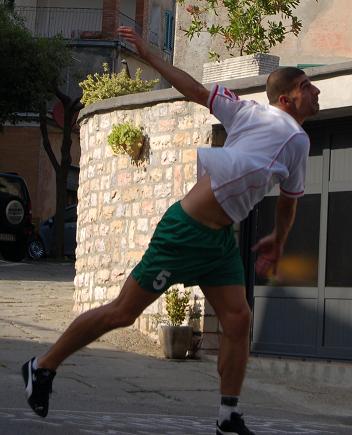

- points are scored when one side is not able to hit the ball back, either because the ball bounces in the field and then gets out of reach, or because of fouls (e.g. if the ball is hit back with any part of the body except the palm of the hand, if two players of the same team hit the ball one after the other, etc.)

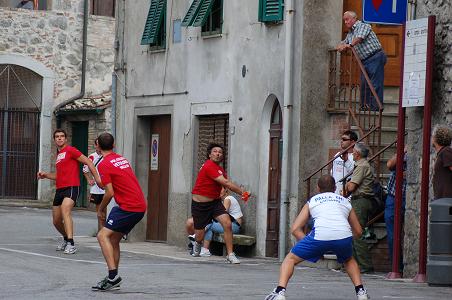


- the peculiarity of the game is that there is no pre-defined mid field. The midfield line is set by stopping the ball after it has bounced twice at any moment of the game. In the spot where the ball has been stopped, a marking will be made -known as “caccia”- normally with chalk. At the end of a tournament, the field is scattered with lines.


This action is repeated twice. In the process of defining these two lines, points can still be scored, as the teams may still lose points if the ball goes out of the sides, or is hit irregularly. - once the two midfield markings are defined, the teams will switch sides. In this phase of the game, in addition to the previous systems, the points will be assigned by playing using the “cacce” as the midfield. The point will be lost if the ball stops after the second bounce on “your” side of the field. Once a point is made in relation to a “caccia”, the line will be erased, and the game will continue, proceeding to define the next pair of lines.
- The duration of a match is extremely variable, as there is no tie break. Also, there is no referee on the field, so any dispute is managed by all of the players

- While the competition on the field can get fierce, all tournaments will end with celebrations and partying where the same teams get together, so the game is also a great opportunity for the village communities to meet and have a good time

- Tournaments take place normally from mid-July through September.
For a more formal description of the rules (in Italian): wikipedia.